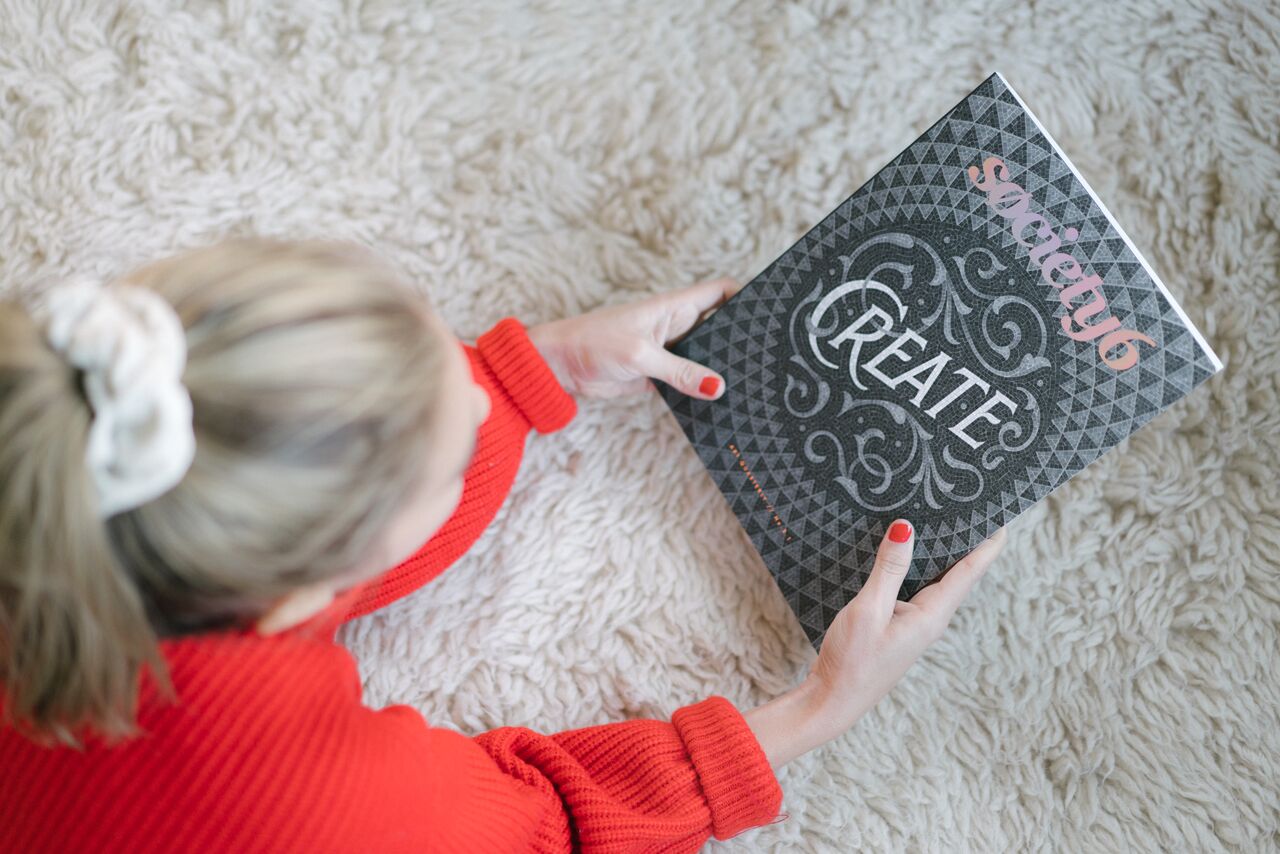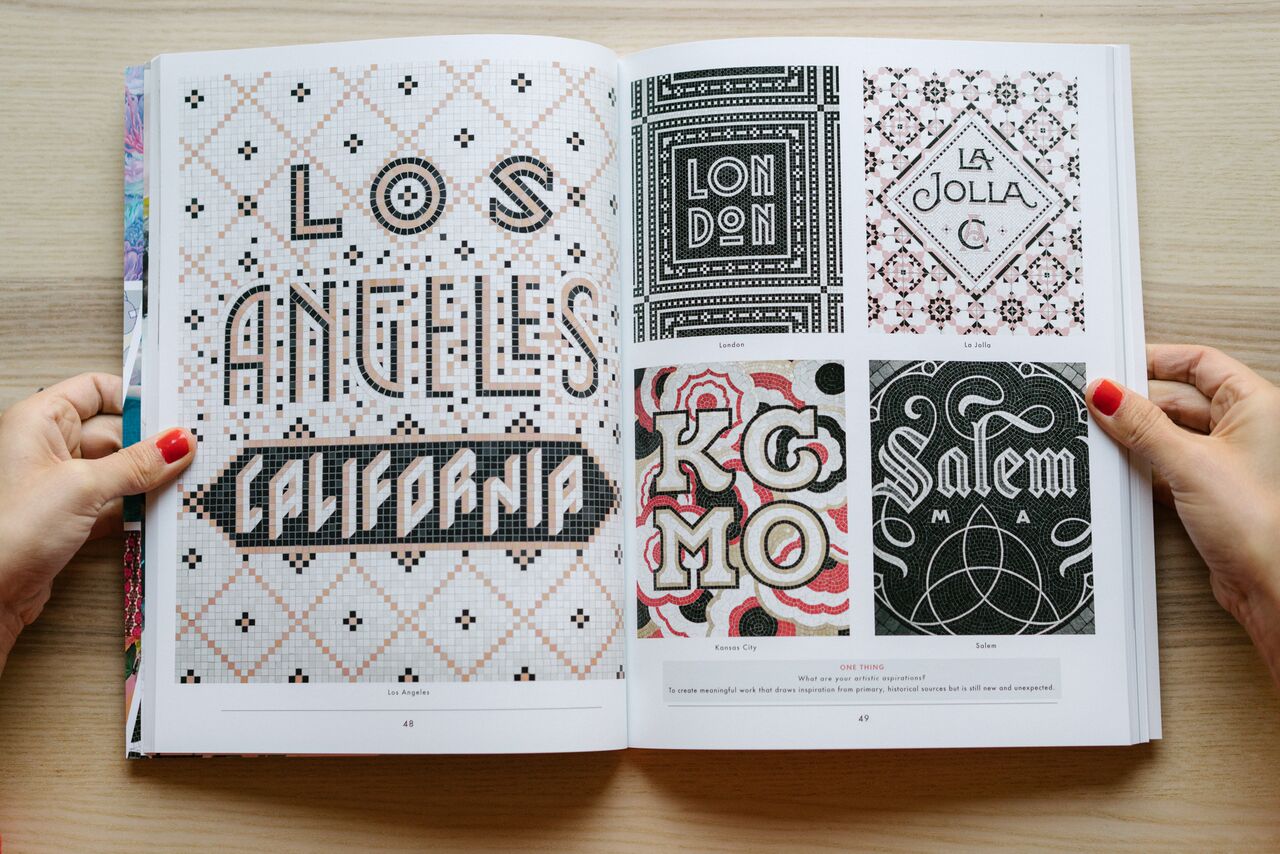Time-intensive. Endless tiles. Watch this “fauxsaic” unfold in just 2 minutes.
Nick Misani is the creative wizard behind the cover of our latest Art Quarterly, No. 3.1. The timelapse below will give you a window into the time-intensive process of creating his “fauxsaics”–a mashup of “faux” and “mosaic” since his artwork is created digitally. Below the video, an interview with Nick reveals how modern-day, digital design tools have made mimicking old school mosaics possible. And he’s meticulous about honoring historical technique. Enjoy!
Where are you based and what kind of art do you create?
I’m an NYC-based, full-time freelance designer specializing in historically-inspired illustrative lettering.
What does “full-time” cover?
In addition to designing for editorial, publishing, and advertising clients, I give lettering workshops on whichever historical style I’m currently obsessed with. At the moment, that’s Art Deco!

Get your Society6 Art Quarterly 3.1 here >
What does “fauxsaic” mean? Who coined the term?
Fauxsaics are a series of lettering-based, realistic mosaic illustrations where the form is dictated by the limitations and conventions of traditional mosaic technique. Each fauxsaic is composed of 6,000 to 10,000 hand-drawn and individually-colored tiles and takes between 12 and 24 hours to create, depending on the complexity of the tiling pattern.
This personal project combines my love of lettering, interior design, and decorative arts (which, before this project, had never found a point of intersection for me). I first started experimenting with creating mosaics digitally while working for Louise Fili, where a technique emerged organically over the years. When I posted my first mosaic illustration on Instagram, the term “fauxsaic,” a portmanteau of “faux” and “mosaic,” popped into my head.

Can you describe the creative process we’re seeing in the video?
I start by sketching out the word I plan on lettering. Fauxsaics are the first and foremost typographic compositions, so I want to make sure the letterforms and ornaments are strong from the beginning.
I use Adobe Illustrator to plan my design and prepare it for the grouting phase. This is where I establish the tile size and shape as well as the different tiling patterns I plan on using. Then I create a series of guides that help me in the next phase. The “grouting” happens by hand, with the aid of my iPad Pro—though my very first fauxsaic used only pen and ink.
Afterwards, every tile is individually colored in Photoshop. I stay in Photoshop and finish the piece by adding one or two textures and some subtle lighting. Achieving that realism starts at the individual tile level: they each have to be created with a sensitivity to the methodology used to cut tiles in real life. For example, smooth curved lines are difficult to create when cutting stone with a tile cutter, so most tiles in real mosaics tend to have squared off sides even if they are on a curved line. When combining several tiles, their flow and pattern must be consistent with classical technique. The biggest challenge, however, is probably resisting the temptation of overdoing it in Photoshop by adding unnecessary effects.
What was unique about creating the cover for the Society6 Art Quarterly 3.1?
With every illustration I create, I try to explore a different typographic style and traditional mosaic technique or pattern. I had never created a fauxsaic using Rococo-inspired flourishes, and had been wanting to try it for some time. I had also been meaning to explore a pattern of concentric circles and triangles that you sometime see in traditional floors. It all came together in this cover for the Society6 Art Quarterly.
Any parting words for fans or fellow artists?
Don’t be afraid of time-intensive, inefficient processes. We live in a world that doesn’t really reward taking it slow. We’re encouraged, if not expected, to constantly produce and publish, but I believe you can tell when someone spent a lot of time working on something. Design doesn’t have to look effortless.
Comments